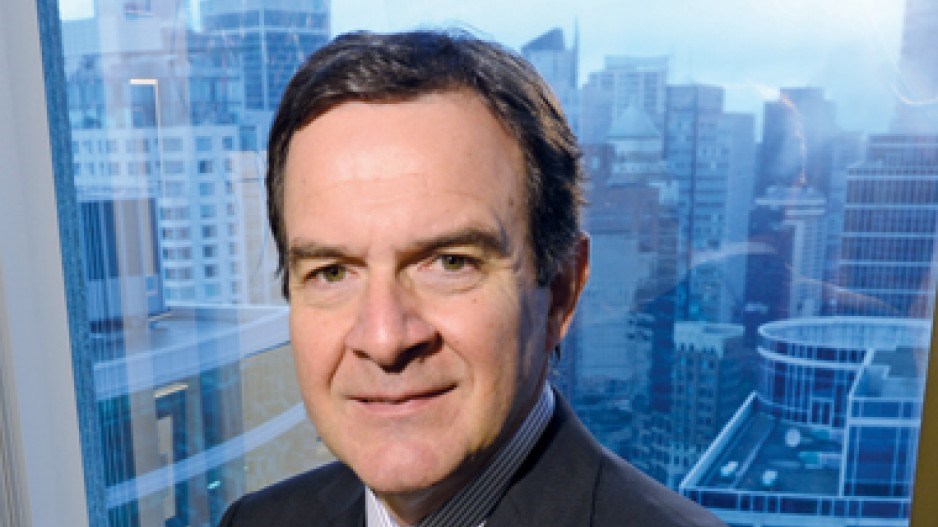Cash flow remains king in B.C.’s hot investment real-estate market, and investors at every level have been paying a premium to get it.
The top 100 biggest real estate deals in B.C. last year totalled more than $3.15 billion in sales. That’s up 37% from $2.3 billion in 2011, and it bested the previous record of nearly $3 billion set in 2010.As in previous years, the top 50 deals accounted for more than three-quarters of the deal value in B.C., with the top half of this year’s list matching the record in 2010 with $2.4 billion in transactions.
“There was, and continues to be, a surplus amount of demand from all investment sectors, be it private capital, institutional or public,” said Kirk Kuester, Vancouver managing director at Colliers International. “All of them are converging on a market that’s very undersupplied.”
All of B.C.’s key investment property classes were represented on the list, but multi-family and retail properties accounted for more than half of last year’s biggest deals.
According to Business in Vancouver’s research, multi-family properties have become increasingly valuable. The number of apartment building sales making the top 50 sales in B.C. has risen steadily over the past five years. Retail properties, including shopping centre sales, have maintained their buoyancy since 2010, when 17 malls and retail properties changed hands.
Hendrik Zessel, senior managing director at Cushman & Wakefield in Vancouver, noted that investor demand for both segments has remained strong.
“Multi-family is the safest [investment property class], and the financing rates people are able to get for apartment buildings has been the best it’s been in years,” said Zessel. “In retail, a lot of people are interested because of the value of the income stream and the interest in the underlying land value which is going up.”
New development to continue
While there’s a lull in the Lower Mainland’s residential real-estate market, developers of all sizes haven’t stopped buying prime development sites in the region.
Fifteen of the 100 largest real-estate deals worth $364.4 million were land deals, but according to RealNet most of the Lower Mainland’s investment real estate deals have historically involved development properties.
According to RealNet’s year-end report, about 400 of the nearly 1,400 transactions last year in the Lower Mainland were in residential land; another 400 were in commercial development property.
Those 800 deals produced more than $2.6 billion in transaction volume from last year’s $5 billion in the region.
“Despite concerns around the residential market today, there’s still great [developer] demand for good sites,” said Kuester.
These deals will add to an already robust investment climate in the Lower Mainland with nearly $4 billion in residential and commercial property under construction and another $15.1 billion being proposed in the region, according to the Major Projects Inventory.
Zessel noted that demand for quality properties in Vancouver has not abated. The region’s relatively strong market fundamentals continue to attract private, public and institutional investors, locally and abroad.
The current development boom, including the dozen office properties being proposed or already under construction in Downtown Vancouver, illustrates the region’s attractiveness as investors decide to develop the properties they want rather than wait for something to come on the market.
“You’re going to see more activity on commercial land simply because the pension funds and other groups are saying, if they can’t find what they want, they will build it,” said Zessel.
Cautious optimism for 2013
But aligned with the slowing of the Lower Mainland residential real-estate market are growing concerns that the region’s commercial real-estate sector might face its own challenges over the next few years.
Kuester said valuations might already be at a peak “or, I hate to say it, beyond peak,” with capitalization rates at record lows and rents at record highs in prime areas.
Rising interest rates will eventually erase the narrow returns being received today by investors who are content to invest in commercial real estate instead of risking their money in the stock market or keeping their cash in the bank.
“Yield expectations were lower than I thought they’d get to,” said Zessel.
In the near term, Kuester suggested the commercial real-estate market could become more active as potential sellers who have held on to their property look to cash out before interest rates change.
However, whether that happens depends on whether the Lower Mainland market is already showing signs of weakness. According to the BC Real Estate Association’s (BCREA) Commercial Leading Indicator (CLI), many of the underlying economic components to a strong commercial real-estate market have lagged in 2012’s second half, suggesting a slowdown may be in the cards this year.
Brendon Ogmundson, a BCREA economist, noted, “We’ve seen the index turn down in the last few quarters, because a lot of the variables that go into it like retail spending and manufacturing employment have really softened. If that continues, we could see a turning point.”
But until interest rates start to rise substantially, Ogmundson remained cautiously optimistic about the investment market in B.C.
“If you look at the short-term horizon, it looks like a slowdown is coming, but generally, B.C. is in pretty good economic shape, and that’s what investors look at. They look at our exposure to China, our retail demographics, population growth. They’re pretty positive.” •




